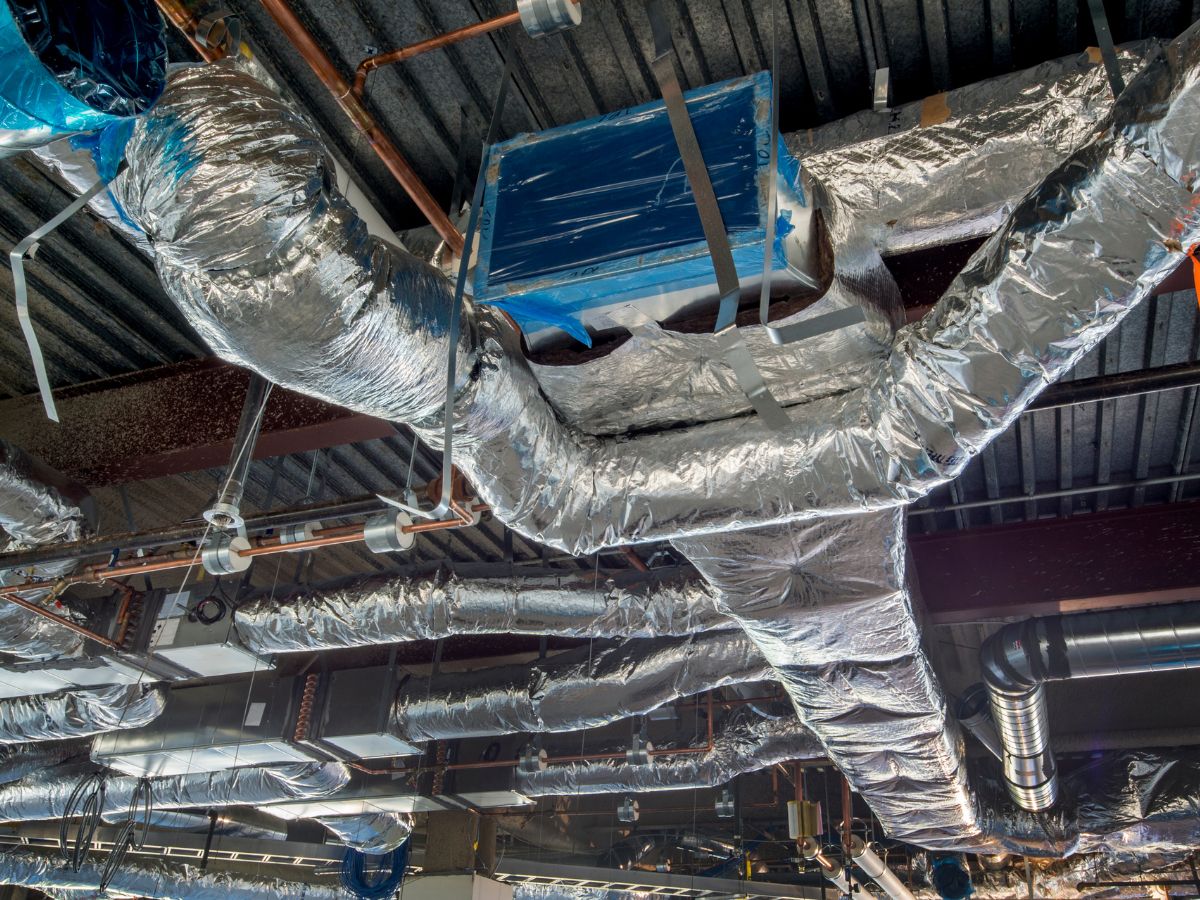In the realm of home comfort, effective insulation of HVAC ducts serves as a cornerstone for achieving energy efficiency and maintaining ideal indoor temperatures. At Anderson Air, we understand the pivotal role that well-insulated ducts play in ensuring the optimal operation of your heating and cooling systems.
Proper duct insulation is a worthwhile endeavor whether you’re looking to reduce energy expenses or improve your home’s air quality.
This article will guide you through the crucial steps and considerations for insulating HVAC ducts, allowing you to make informed decisions and enjoy a more comfortable living environment. Anderson Air is here to provide you with clear, reliable insights into enhancing your home’s climate control systems.
Let’s embark on this journey to better insulation and improved energy savings together.
Insulating Your HVAC Ductwork Like a Pro
Properly insulating your HVAC ductwork can lead to significant energy savings and enhanced comfort, so let’s explore the key steps together.
Choosing Materials
When it comes to insulating your HVAC ductwork, picking the right materials is crucial for optimal energy efficiency. At Anderson Air, we recommend using fiberglass, foam, or reflective insulation materials. These options provide excellent insulation properties while being widely available and easy to work with. Always ensure the materials you choose meet local building codes and regulations.
Evaluating Insulation Options
Before diving into the installation, evaluate which type of insulation best suits your home’s needs. Consider factors like duct location, accessibility, and temperature requirements. Reflective insulation materials may offer additional benefits by reducing heat gain or loss if your ducts are in an unconditioned space, such as an attic or basement.
Preparing for Insulation
Preparation is essential to a successful insulation project. Start by inspecting your ductwork for any existing damage or leaks and address these issues before applying insulation. Clean the duct surfaces to ensure a smooth application. Obtain all necessary tools and safety equipment, such as gloves and masks, to provide a safe working environment.
Installing Insulation
It’s time to install the insulation with your materials and workspace ready. Begin by cutting the insulation to fit snugly around the ductwork. Secure it in place using fasteners designed for your chosen material. Pay attention to joints and corners, ensuring they are well-insulated to prevent any air leaks.
Handling Hard-to-Reach Areas
Insulating hard-to-reach areas can be challenging, but ensuring your entire duct system is covered is important. Flexible insulation materials or specially designed tools can help you access these tricky spots. Remember, Anderson Air is dedicated to helping you achieve a thoroughly insulated duct system for maximum efficiency.
Following these steps will enhance your home’s heating and cooling systems and help you enjoy long-term energy savings. For more guidance and support, Anderson Air is here to assist every step of the way.
Benefits of Insulating Your Ductwork
Insulating your ductwork provides numerous advantages that directly impact your home’s efficiency and comfort:
- Energy Savings: Insulated ducts reduce heat loss and gain, ensuring your HVAC system runs more efficiently. This translates into lower energy expenses and decreased environmental impact, which is a win-win for your wallet and the planet.
- Improved Air Quality: Proper insulation helps maintain consistent temperatures, reducing the chances of condensation within the ductwork. This reduces the overall risk of mold and mildew growth, enhancing your home’s air quality.
- Enhanced Comfort: With insulated ducts, your heating and cooling systems distribute air more evenly throughout your home. This results in stable indoor temperatures, eliminating hot or cold spots and enhancing overall comfort.
- Extended Equipment Lifespan: By reducing the workload on your HVAC system through efficient ductwork, you help extend the life of your equipment. Insulation leads to less frequent breakage and maintenance, providing long-term savings on repairs.
- Noise Reduction: Insulation acts as a sound barrier, dampening the noise generated by airflow through the ductwork. This is beneficial in quiet environments or in rooms where reduced noise levels are essential.
- Environmental Benefits: Proper duct insulation improves energy efficiency, reducing carbon emissions and supporting a healthier environment. These steps align with eco-friendly practices and sustainability goals.
- Pest Prevention: Properly insulated ductwork can help prevent pests from entering your HVAC system. By sealing gaps and covering ducts, you reduce entry points for insects and rodents, ensuring your system remains clean and efficient.
Understanding these compelling benefits can help you appreciate the importance of investing in high-quality duct insulation. For personalized advice and expert assistance, Anderson Air remains committed to guiding you toward achieving optimal indoor climate control.
Conclusion
In conclusion, for homeowners looking to save money and improve their home’s comfort, DIY insulating air ducts is a savvy move. Properly insulated ductwork can reduce utility bills by reducing energy loss and ensuring efficient temperature control.
Homeowners can successfully tackle this project with the right materials and a comprehensive step-by-step approach. Our home improvement experts at Anderson Air support you in achieving a more energy-efficient home, combining the benefits of DIY with professional insights.
Take charge of your home’s efficiency today, and enjoy the substantial savings and improved air quality that come with well-insulated ducts.

